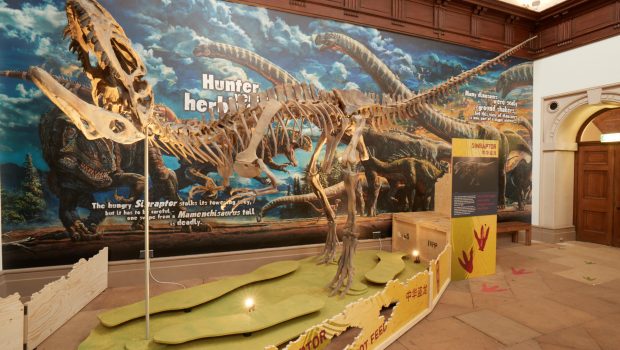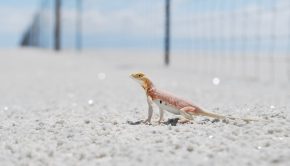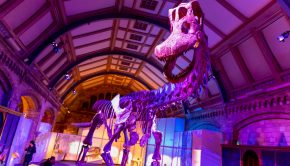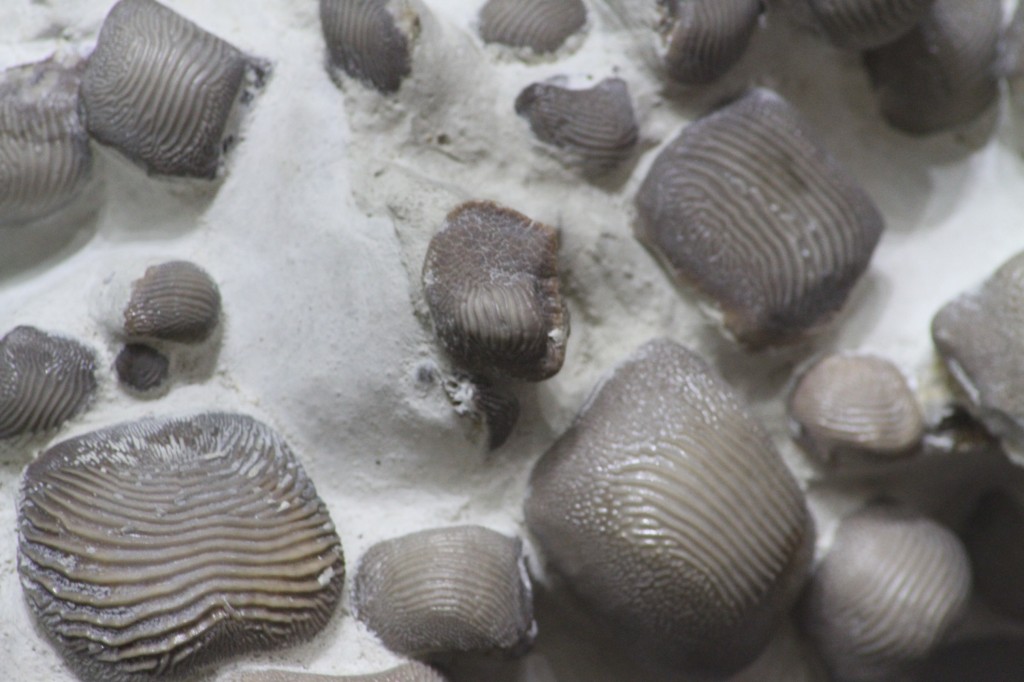Episode 82: Dinosaurs of China
‘Dinosaurs of China’ at Wollaton Hall, Nottingham, UK, is a one-time only world exclusive exhibition of dinosaurs. Featuring fossils and specimens never before seen outside of Asia, the collection brings to life the story of how dinosaurs evolved into the birds that live alongside us today.
With its curators, Dr Adam Smith and Dr Wang Qi, we’re provided with insights into how this exhibition was pulled off and are given a full guided tour.
For those in the area, Dinosaurs of China runs until 29th October 2017.
Podcast: Download (Duration: 1:09:40 — 96.6MB)

The ‘Dinosaurs of China’ exhibition is being held at Wollaton Hall, Nottingham, UK. This building may be most-recognisable as Wayne Manor from The Dark Knight Rises.
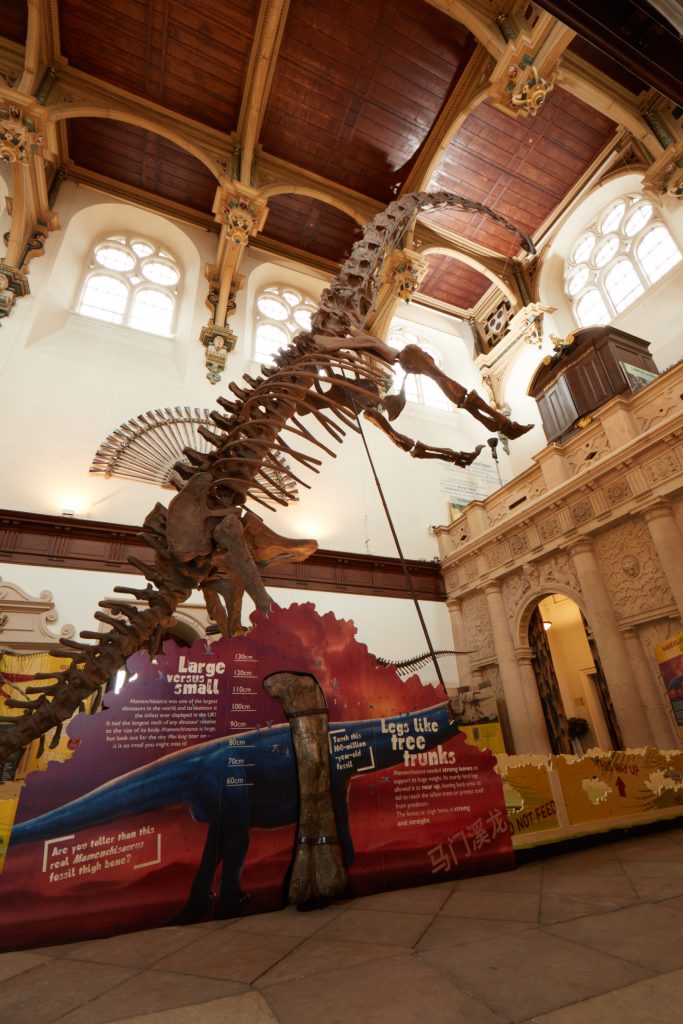
Upon entering the exhibition, visitors are greeted by a rearing Mamenchisaurus. This dinosaur possessed an extremely long neck, up to 12m in length, which it here uses to peer over the balcony onto the upper floor. In fact, the dinosaur is so large that it couldn’t fit in the building any other way!
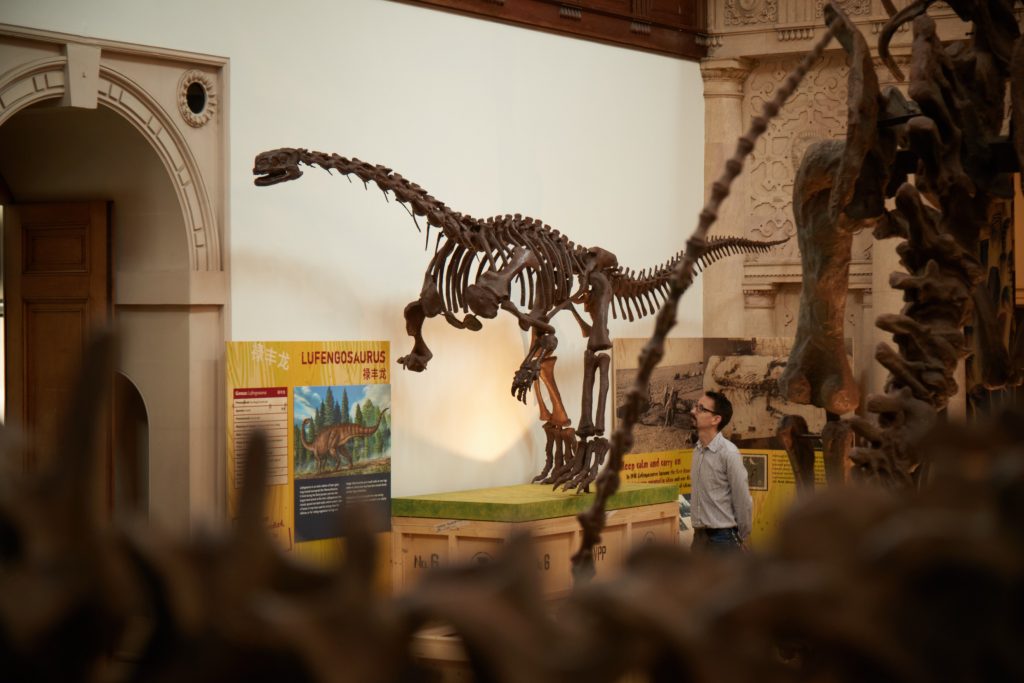
Lufengosaurus is a older relative of sauropods like Mamenchisaurus. This was the first dinosaur to be discovered, studied and described by Chinese palaeontologists.
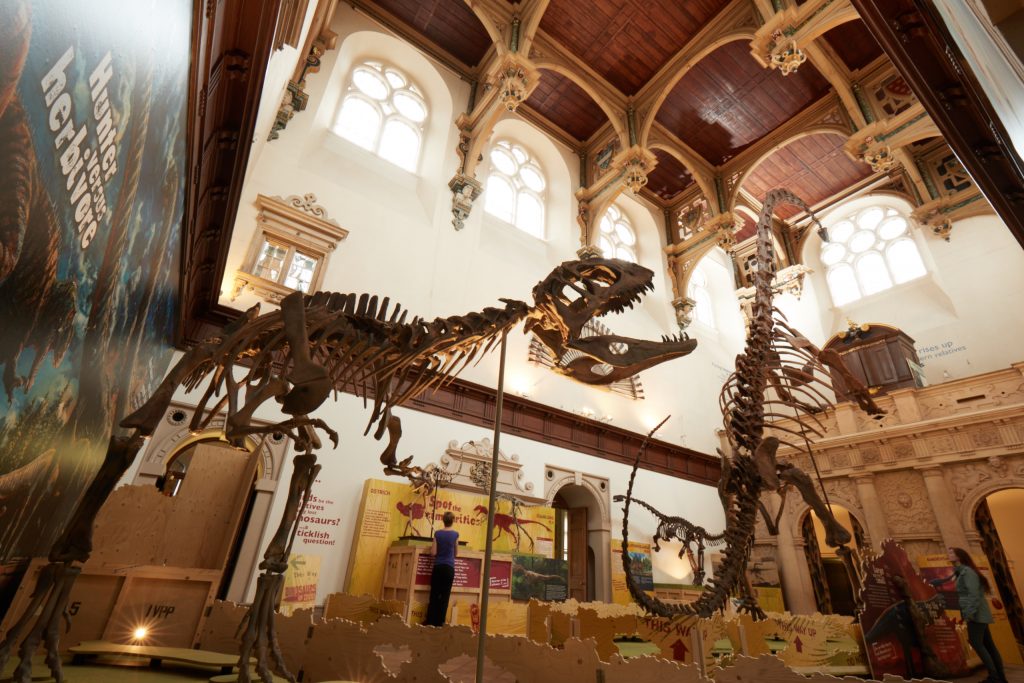
Stalking Mamenchisaurus in the first hall is Sinraptor. This is one of the largest theropods found in China, but the specimen displayed here was still wasn’t fully mature.
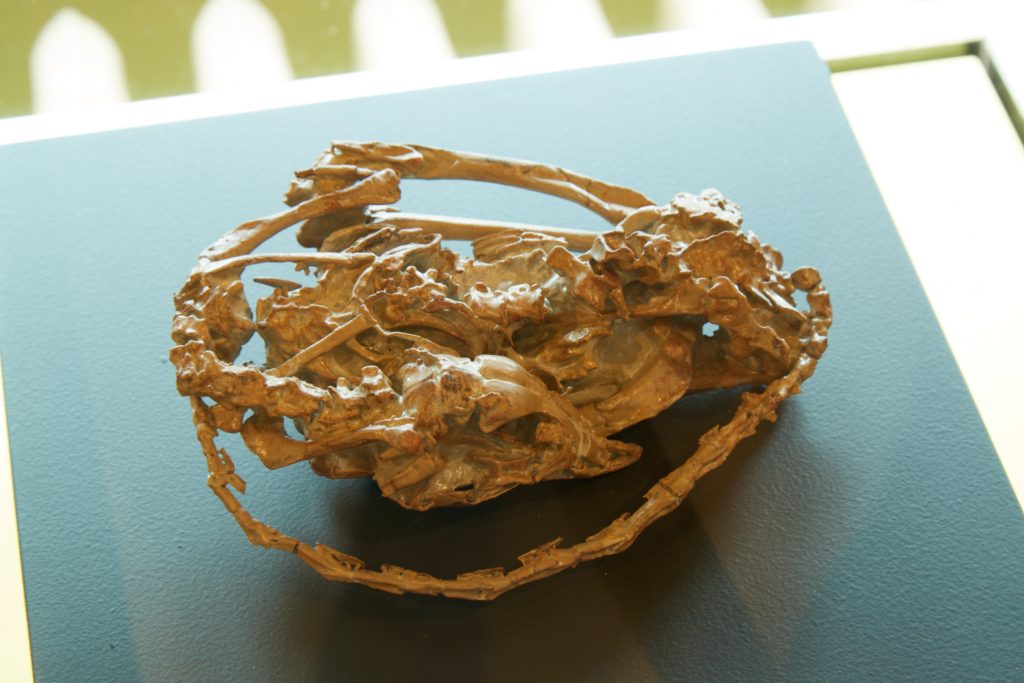
Representing some of the dinosaurs that exhibited bird-like behaviours, Mei long was preserved in a classic bird-like sleeping position with its head tucked beneath its arm. It was preserved in full-3D under a blanket of ash from a volcano.
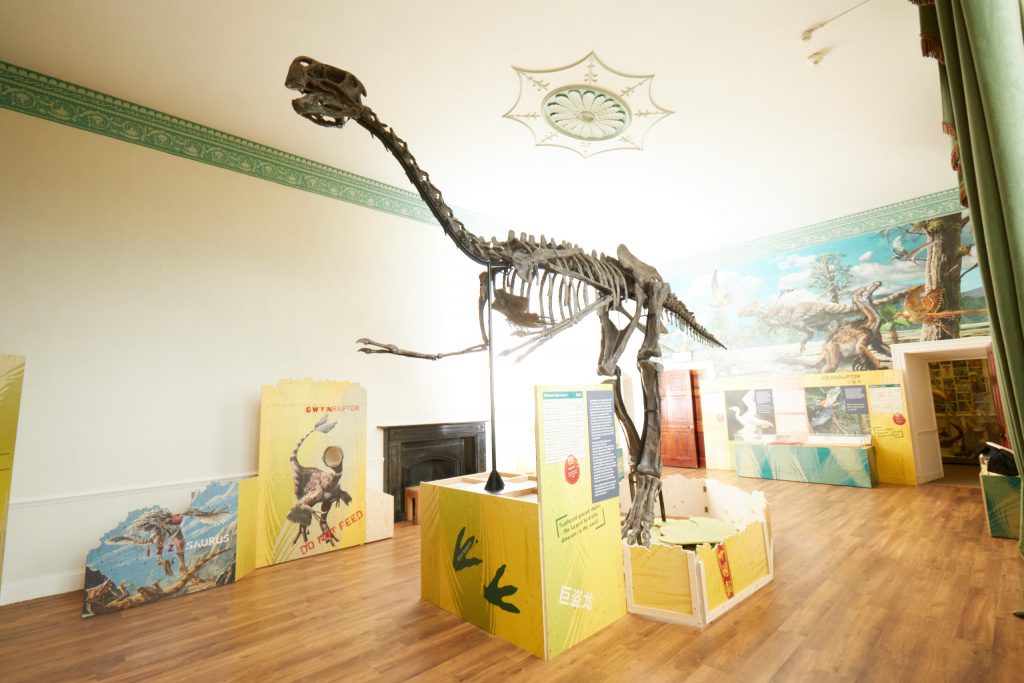
The largest of all the bird-like dinosaurs to have been discovered is Gigantoraptor. It stands at 8m long and 4m high, which is as tall as a giraffe. Whilst this genus is know only from its bones, phylogenetic bracketing suggests that it would have possessed feathers.
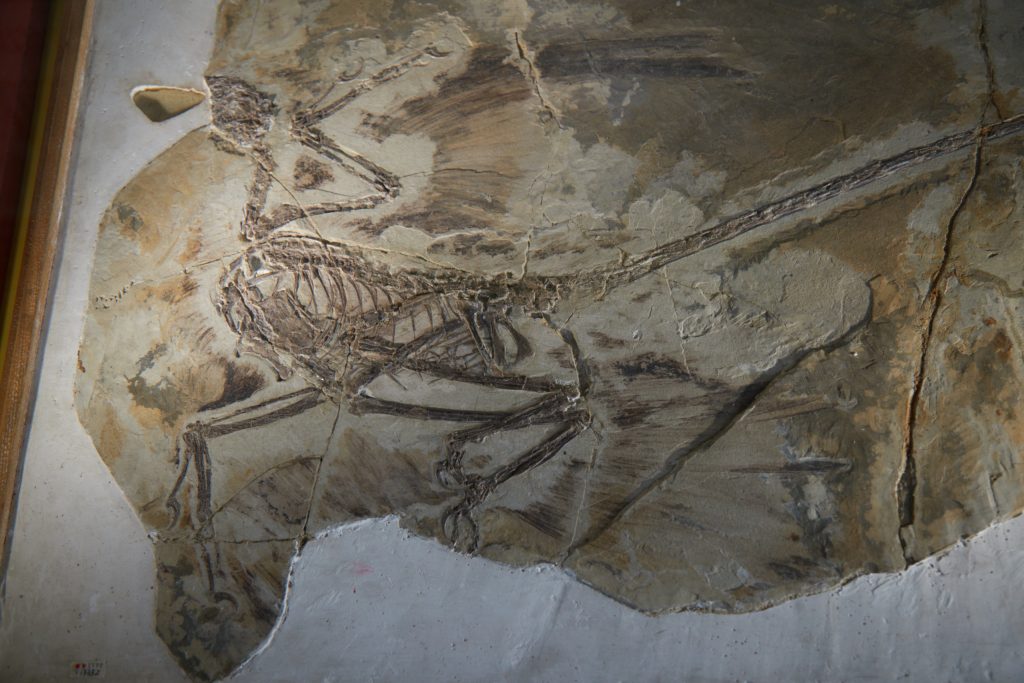
On loan from the Institute of Vertebrate Paleontology and Paleoanthropology (IVPP) is the holotype of Microraptor gui. This species retains the dinosaur characteristics of clawed hands and a toothed beak, but has obvious feathers on its arms and legs. It was likely that Microraptor could fly.
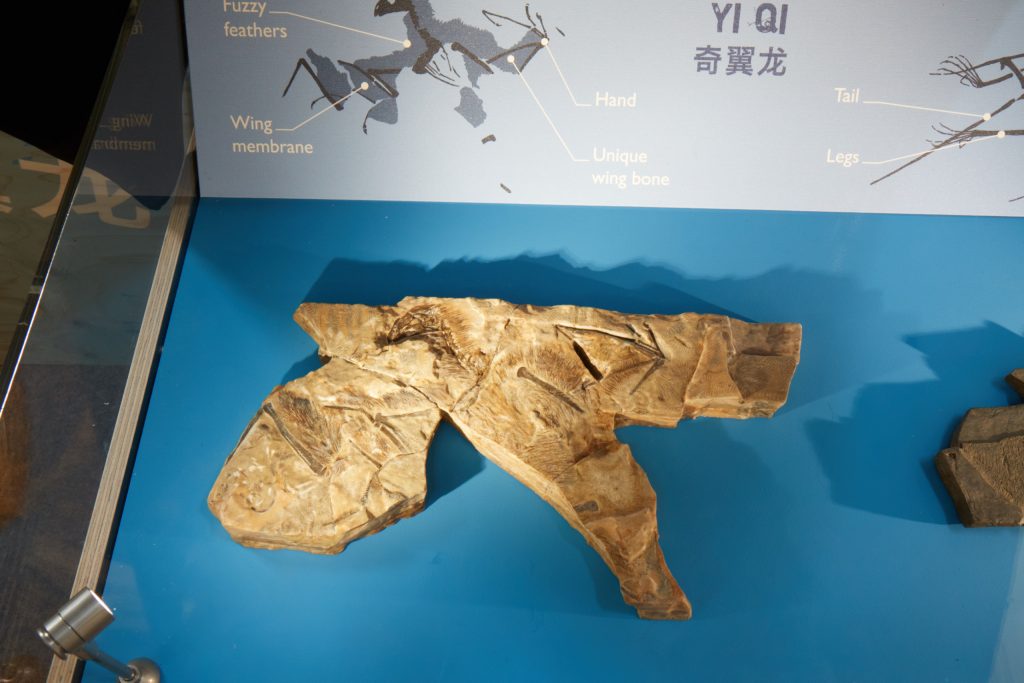
Whilst the four wings of Microraptor may represent an experimentation with flight, so too does the unique wings of Yi qi. This small theropod also had feathers, but instead used a membranous wing, much like a bat, to fly or at least glide. The actual fossil was too delicate to be shipped and put on display, what is pictured is actually a 3D-printed replica.

